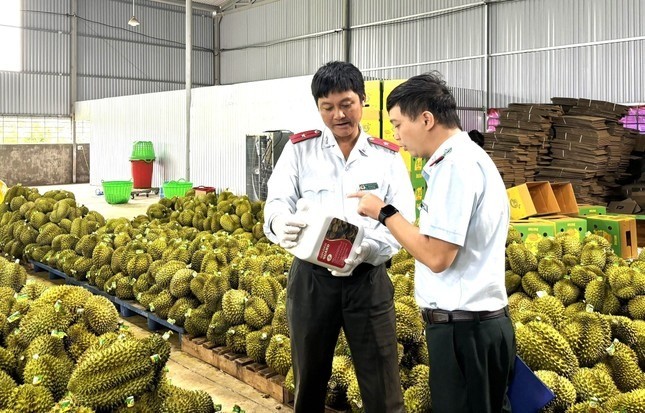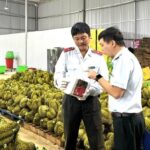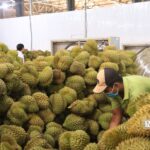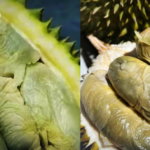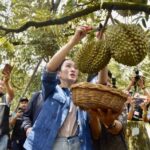On May 22, Mr. Huynh Tan Dat, Director of the Plant Protection Department, Ministry of Agriculture and Rural Development, provided the media with information regarding the issuance of codes for durian-planting areas and packaging facilities for official export to China, as well as updates on the issue of heavy metal residues in exported durian.
Identifying the Cause of Contaminated Durian
Regarding the reports of heavy metal residues in exported durian, Mr. Dat stated that as soon as warnings were received from the importing country, the Plant Protection Department promptly dispatched inspection teams to key durian-growing areas. Initial results indicated that the highest risk was concentrated in some provinces in the Mekong Delta region.
According to a preliminary analysis, there are two main reasons for the excessive levels of cadmium in durian.
Firstly, some regions have soil characteristics with naturally higher levels of cadmium and lower pH levels, which reduce the tree’s ability to absorb healthy nutrients, causing it to take up heavy metals.
Secondly, in many new planting areas, where farmers lack experience, there is a tendency to overuse chemical fertilizers at doses several times higher than recommended, inadvertently increasing the risk of residues.
“We have clearly advised against the use of fertilizers containing cadmium. It is essential to change the mindset that soil is the ‘lung’ of the tree. If the soil is not clean, the fruit will hardly be healthy,” emphasized Mr. Dat.
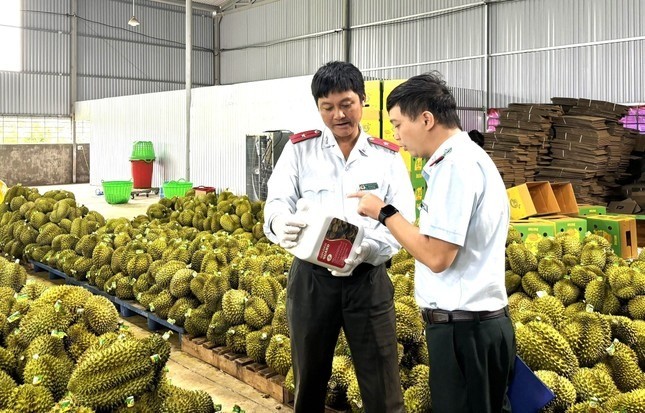
The Dak Lak Department of Agriculture and Rural Development’s inspection team implements a plan to inspect durian packaging facilities for export in the province. Photo: Huynh Thuy.
Regarding the use of Orpiment, an industrial pigment banned in food, Mr. Dat affirmed that after receiving the warning notification, the inspection teams from the department thoroughly examined the suspected durian-growing areas and found no evidence of its use in the cultivation process.
Therefore, if there are residues, it is highly likely that they occurred during intermediate stages, outside the scope of the Plant Protection Department’s management.
To clarify this issue, the department proactively sent a dispatch requesting coordination with other competent authorities to conduct a comprehensive investigation, thereby protecting the interests of consumers and upholding the reputation of Vietnamese durian in the international market.
“If we don’t ensure transparency and address this issue thoroughly, a single batch of substandard goods could potentially lead to the loss of the entire market,” Mr. Dat stated.
Regarding testing capabilities, Mr. Dat mentioned that there are currently 12 laboratories for cadmium testing and 8 laboratories for Orpiment testing nationwide, with sufficient capacity to test on a large scale.
However, rather than focusing on the location of the testing facilities, the more crucial aspect is their organization and efficiency in serving businesses best. “A single fruit season can yield millions of tons of produce. The question is not ‘where to test’ but ‘how to test efficiently, accurately, and promptly without causing delays for businesses in reaching the market,” expressed Mr. Dat.
He also noted that establishing a testing facility that meets international standards requires not only financial investment but also qualified personnel and time for accumulation. Therefore, the current solution is to effectively operate the existing laboratories while strategically distributing them based on production and export needs in each region.
Comprehensive Measures to Address the Root Cause
Since the beginning of this year, inspections of durian at Chinese border gates have intensified. Many batches have undergone additional checks, and some have even been returned. According to Mr. Dat, this is not unusual and is entirely within the quality control procedure stipulated by the Protocol between the two countries.
This situation compels Vietnam to enhance the quality of its exported products.
Mr. Dat emphasized: “It is impossible for a single industry, locality, or enterprise to solely shoulder the mission of improving the quality of Vietnamese durian. All stakeholders, including farmers, scientists, managers, and exporting enterprises, must stand together in a unified value chain.”
If we do it right and meet the standards, the importing country will have a basis to reduce the frequency of inspections. This will not only save costs but also enhance the competitiveness of enterprises, accelerating their entry into the market and avoiding congestion at border gates.
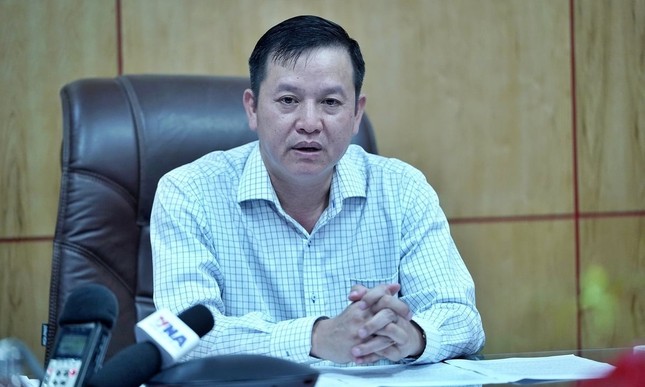
Mr. Huynh Tan Dat, Director of the Plant Protection Department. Photo: Bao Thang/NNMT.
To control input quality and minimize heavy metal residues in agricultural products, the Plant Protection Department has implemented a rigorous four-step inspection plan. Firstly, 100% of agricultural inputs must be tested according to registered technical standards. Enterprises producing and distributing fertilizers must ensure accurate labeling, composition, and quality that match the actual product, preventing fraud. After testing, fertilizers need to be declared for conformity and transparency for users. Simultaneously, local inspectors must participate in supervision from the beginning, not just after an incident occurs.
All these steps must be closely linked, forming a “control belt” around the crop right from the land improvement stage.
In parallel with input control, the responsible agency is deploying multiple soil improvement models tailored to the characteristics of each region, aiming to eradicate heavy metals from the soil and crops. Three groups of solutions are being piloted: using biochar-containing fertilizers to retain heavy metals in the soil, adjusting soil pH to enhance healthy nutrient absorption by trees, and intercropping or crop rotation with heavy metal-absorbing plants, followed by composting.
This approach not only addresses technical aspects but also transforms production thinking. For sustainable exports, we cannot rely solely on “a season of good prices.”
Highlighting the significance of codes for planting areas and packaging facilities, Mr. Dat stated that each code represents an asset, and if not valued and preserved, there is a clear risk of losing both the market and brand reputation.
According to the Plant Protection Department, the General Administration of Customs of China (GACC) has approved an additional 829 codes for planting areas and 131 codes for packaging facilities, all of which are new. As of now, Vietnam has 1,396 planting area codes and 188 packaging facility codes approved by GACC.
The Plant Protection Department considers this a result of the close coordination between Vietnam and China in enhancing supervision capabilities, traceability, and food safety assurance throughout the durian export value chain.
Why Do Businesses Claiming to Be Drug-Free Still Test Positive for Saffron in Their Durian Fruits?
The discovery of high levels of cadmium in durian is primarily due to soil pollution, prolonged use of fertilizers and pesticides in cultivation. Additionally, the use of color enhancers by some businesses during the preliminary processing stage further exacerbates the issue, resulting in the presence of Sudan Yellow, a harmful dye, in the fruit.
The Exotic Durian Look-alike Taking Asia by Storm: Rare Green-hued Pulp, Priced at Over 700,000 VND per kg, Hitting Shelves in June.
Introducing the latest craze sweeping across Asia – the coveted durian fruit from [Country]. With its unique flavor and texture, this durian variety is taking the continent by storm, commanding a premium price and leaving enthusiasts in a frenzy. Unveiling the secrets behind its allure, this exotic delicacy promises an unparalleled sensory experience, captivating even the most discerning palates.
The Sad Tale of the ‘Drugged’ Durian
“Drenching” is a common technique employed for durians post-harvest, but rumors have transformed this practice into a “toxic chemical” treatment, poisoning consumers.

